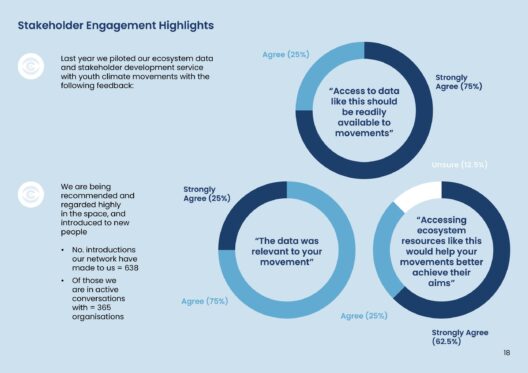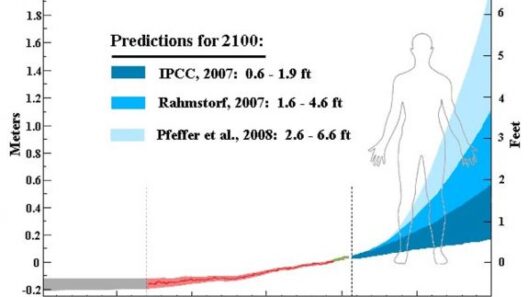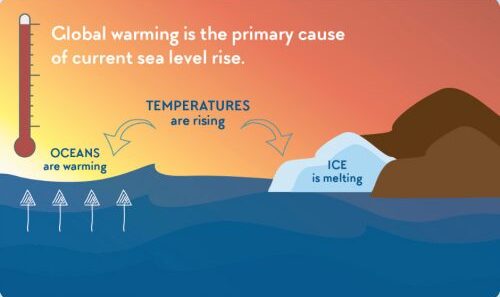As the phenomenon of climate change continues to unfold, the implications of rising sea levels are becoming increasingly evident. This environmental crisis, often underestimated, harbors a plethora of consequences that affect not only coastal ecosystems but also human life and infrastructure. Understanding these impacts is crucial in order to prepare and adapt to the shifting realities of our planet.
Rising sea levels are primarily driven by two major factors: the thermal expansion of seawater as it warms and the melting of glaciers and ice sheets. As global temperatures rise, the consequences reverberate throughout the world, creating a cascade of ecological and sociological disturbances. The reality is that the implications of rising sea levels are profound, multifaceted, and warrant urgent attention.
Coastal Erosion: The Relentless Assault on Shorelines
One of the most immediate impacts of rising sea levels is coastal erosion. The gradual encroachment of seawater onto land leads to the disintegration of shorelines, with dire consequences for both human settlements and natural habitats. Beaches, once cherished by locals and tourists alike, become increasingly vulnerable to the relentless tide.
This phenomenon not only threatens residential properties but also disrupts local economies reliant on tourism and fishing. With less beach to attract visitors, businesses face the grim prospect of dwindling revenues. Furthermore, as habitats erode, the delicate balance of coastal ecosystems is disrupted, leading to a decline in biodiversity. Endangered species, such as certain shorebirds and marine life, are particularly at risk as their habitats diminish.
Saltwater Intrusion: Contaminating Our Freshwater Sources
The infiltration of saltwater into freshwater aquifers is another significant consequence of rising sea levels. As coastal waters rise, the natural barrier that protects freshwater reserves deteriorates, resulting in saltwater intrusion. This phenomenon poses a serious threat to agriculture and drinking water supplies in coastal communities.
Crops that require freshwater become increasingly stressed, leading to lower yields and food insecurity. For communities that rely on agriculture, this can result in economic turmoil and social unrest. Moreover, as communities grapple with decreased access to potable water, the health implications can be dire, contributing to rising rates of waterborne diseases. This grim scenario underscores the urgent need for sustainable water management practices and infrastructure improvements to safeguard against salinization.
Displacement: The Human Cost of Rising Tides
As rising sea levels exacerbate coastal flooding, the displacement of populations becomes a growing concern. Vulnerable communities situated in low-lying areas face an existential threat, with entire neighborhoods potentially rendered uninhabitable. The prospect of climate refugees—individuals forced to leave their homes due to environmental changes—presents a staggering humanitarian challenge.
Governments worldwide face the difficult task of navigating relocation efforts for displaced populations. Questions of equity and justice arise as marginalized groups may bear the brunt of climate impacts. Moreover, the psychological toll of displacement cannot be understated; losing one’s home and community can induce feelings of grief and despair, affecting mental health and overall well-being.
Economic Implications: The Financial Toll of Adaptation
The economic ramifications of rising sea levels extend beyond immediate property damages. The financial burden of adaptation efforts is substantial, necessitating investments in infrastructure, disaster response systems, and resilience planning. Governments and municipalities must allocate significant resources to fortify coastlines, construct barriers, and implement sustainable urban planning practices.
This necessitates collaboration among public and private sectors, as well as innovative financing mechanisms to fund large-scale adaptation projects. Still, the costs of inaction are likely to far exceed those of proactive measures. Investing in resilience now is crucial for mitigating future economic fallout.
Environmental Interactions: Ecosystem Disruption and Loss of Biodiversity
Beyond the human dimension, rising sea levels exert severe pressure on diverse ecosystems. Coastal wetlands, mangroves, and estuaries serve as crucial habitats for myriad species and act as natural buffers against storm surges. However, as these vital ecosystems are submerged, the services they provide—such as carbon sequestration and water filtration—are irrevocably compromised.
The loss of biodiversity due to habitat destruction has cascading effects, leading to weakened ecosystems that can no longer support the species that thrive within them. This decline in biodiversity ultimately affects human communities, as ecosystems that are unbalanced can lead to increased incidences of pests and diseases.
Policy and Preparedness: Charting a Course for Resilience
To combat the multifaceted challenges posed by rising sea levels, a robust policy framework is essential. Governments must prioritize climate action, implementing policies that promote sustainable coastal management and reduce greenhouse gas emissions. Comprehensive planning and public engagement are needed to ensure communities are well-prepared for the consequences of climate change.
Moreover, it is imperative to invest in cutting-edge research and technology to monitor and address the intricate dynamics of coastal ecosystems. Collaborative efforts across sectors and borders will be vital in sharing best practices and pooling resources to tackle this global issue. While the challenges are daunting, proactive policies can pave the way for resilience and sustainability in the face of rising tides.
In conclusion, the looming specter of rising sea levels is an urgent call to action for societies around the globe. The impacts are far-reaching, threatening not only our environment but the very fabric of human life. To mitigate these inevitable consequences, we must recognize the interconnectedness of ecosystems, economies, and communities, and commit to proactive measures that foster resilience in our ever-changing world.







